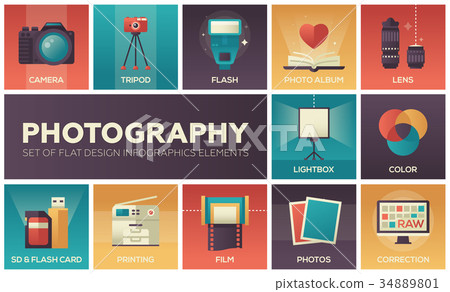Join Us To Discover Crucial Digital Photography Pointers That Will Open Your Electronic Camera'S Capacity-- Prepare To Catch Stunning Pictures In No Time!
Join Us To Discover Crucial Digital Photography Pointers That Will Open Your Electronic Camera'S Capacity-- Prepare To Catch Stunning Pictures In No Time!
Blog Article
Material Writer-Tobin Kaas
When you initially pick up your electronic camera, it can really feel frustrating with all the settings and alternatives offered. You could find yourself wondering how to browse aperture, shutter speed, and ISO efficiently. Grasping these principles is vital, but there's more to digital photography than just technical knowledge. Recognizing make-up methods and lights problems can elevate your pictures drastically. So, suppose you could learn straightforward approaches to enhance your skills and begin catching outstanding pictures quicker than you assume? Let's discover how to change your digital photography journey.
Comprehending Electronic Camera Settings
Recognizing your cam setups is essential for catching spectacular images. When you get your cam, acquaint yourself with the three main setups: aperture, shutter speed, and ISO. Each plays a vital function in how your images turn out.
Start with aperture, which controls the amount of light going into the lens. A bigger aperture (lower f-number) lets in extra light and develops an attractive background blur, ideal for pictures. Conversely, a narrower aperture (higher f-number) maintains more of the scene in focus, ideal for landscapes.
Next off, focus on shutter speed. This setting determines the length of time your electronic camera's sensor is revealed to light. A rapid shutter speed ices up activity, which is terrific for activity shots, while a sluggish shutter rate can create magnificent results like smooth water in landscapes.
Lastly, readjust your ISO. This setting influences your camera's sensitivity to light. A higher ISO works in low-light circumstances yet can introduce sound or grain. Go for the lowest ISO possible while still achieving appropriate direct exposure.
Composition Strategies
When you're out capturing, structure can make all the distinction in how your pictures resonate with customers. Beginning by utilizing the regulation of thirds; imagine your structure separated right into 9 equivalent areas with two straight and two upright lines. Position key elements along these lines or at their junctions to create equilibrium and rate of interest.
Next, take into consideration leading lines. These natural lines in your scene, like roads or rivers, draw the audience's eye right into the picture, directing them through the tale you're informing.
Don't ignore framing; use elements within your scene, like trees or home windows, to create a framework around your topic, including depth and focus.
Likewise, watch on your history. A chaotic background can sidetrack from your primary topic, while a simple one helps it stand out.
Lastly, explore proportion and patterns; they can produce a striking picture that catches focus.
Mastering Lighting Issues
Grasping lights problems is important for recording spectacular photos, as the ideal light can transform a common scene into something phenomenal.
Begin by observing natural light at various times of the day. https://www.kpbs.org/news/2020/jun/13/coronavirus-san-diego-live-updates-covid-19/ and late afternoons offer the very best light, known as the gold hour. The soft, cozy tones throughout these times can improve your pictures perfectly.
Don't avoid overcast days either; diffused light can minimize severe shadows and produce a pleasing impact, particularly for pictures.
Trying out backlighting by placing your subject against the source of light. This method can produce a dreamy halo result and add deepness to your images.
Focus on your electronic camera settings as well. Change the ISO, aperture, and shutter speed to match the lighting conditions. A higher ISO can assist in low light, however be cautious of grain.
Make use of a tripod in darker settings to stay clear of blur.
Last but not least, don't forget man-made lighting. Flash and continuous lights can be great devices for regulating light in difficult conditions.
https://squareblogs.net/chi52ryann/contrasting-popular-cameras-which-one-is-best-for-you
To conclude, grasping your camera does not need to be frustrating. By recognizing your setups, using structure methods, and using the power of natural light, you'll quickly elevate your digital photography abilities. Bear in mind, exercise makes ideal, so get out there and experiment with your newly found understanding. With http://columbus006ryan.xtgem.com/__xt_blog/__xtblog_entry/__xtblog_entry/37577363-checking-out-the-globe-via-the-lens-traveling-digital-photography-essentials?__xtblog_block_id=1#xt_blog and dedication, you'll be recording stunning pictures that show your unique perspective. Appreciate the trip, and don't neglect to have a good time while you go to it!
